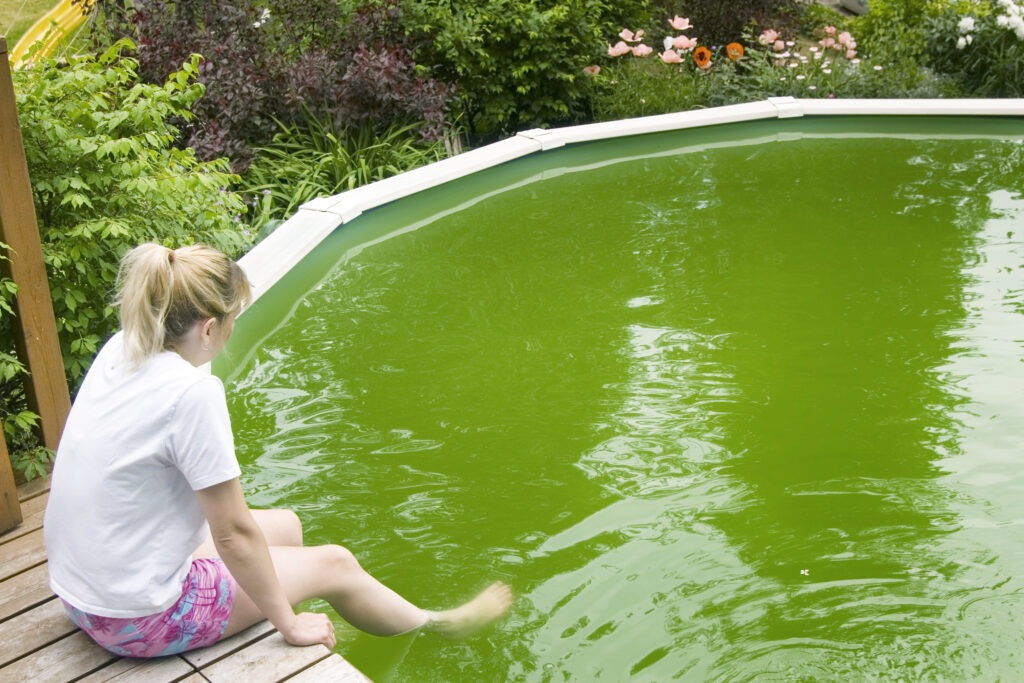How to Clear a Green Pool Overnight: A Step-by-Step Guide
Having a green pool can be a frustrating and unsightly problem, especially if you need to get it swim-ready quickly. Whether you’re hosting a pool party, preparing for a holiday, or just want to enjoy a clean pool, clearing a green pool overnight is possible with the right approach. In this comprehensive guide, we’ll walk you through the steps to transform your green pool into a sparkling oasis in just one night.
Understanding Green Pool Causes
Before we dive into the cleaning process, it’s important to understand what causes a pool to turn green in the first place. The most common culprits are:
- Algae growth: Algae thrive in warm, stagnant water with low chlorine levels. They can quickly multiply and turn your pool water a murky green color.
- Low chlorine levels: Chlorine is essential for killing bacteria and preventing algae growth. If your chlorine levels drop too low, algae can take over.
- Improper pH balance: The pH level of your pool water should be between 7.2 and 7.8 for optimal chlorine effectiveness. If the pH is too high or too low, chlorine won’t work as well.
- Heavy bather load: When many people use the pool, they introduce contaminants like sweat, sunscreen, and body oils. This can lead to algae growth and cloudy water.
By addressing these issues, you can effectively clear a green pool and prevent future outbreaks.
Step-by-Step Guide to Clearing a Green Pool Overnight
- Test and adjust the water chemistry:
- Use a test kit to check the chlorine, pH, and alkalinity levels. Adjust as needed to bring them within the ideal ranges.
- Shock the pool with a high-chlorine shock treatment to kill any existing algae. Use 10 times the normal shock dose.
- Add an algaecide to help prevent future algae growth.
- Clean the pool surfaces:
- Use a pool brush to scrub the walls, floor, and steps of the pool. This will dislodge any clinging algae.
- Vacuum the pool to remove any loose debris and algae.
- Clean or backwash the filter to remove any trapped contaminants.
- Run the pool pump and filter continuously:
- Run the pump and filter 24/7 to circulate the water and keep it clean.
- Make sure the filter is clean and functioning properly.
- Monitor and maintain the pool:
- Check the chlorine and pH levels regularly and adjust as needed.
- Brush the pool walls and vacuum regularly to prevent algae buildup.
- Shock the pool weekly to keep the water sanitized.
By following these steps diligently, you should see a noticeable improvement in your pool’s clarity within 24 hours. However, it may take a few days for the pool to fully clear and return to its sparkling state.
Troubleshooting Tips
- If the pool is still green after 24 hours:
- Check the chlorine and shock levels and adjust as needed.
- Brush and vacuum the pool again to dislodge any remaining algae.
- Consider using a clarifier or flocculant to help remove any remaining contaminants.
- If the pool is cloudy but not green:
- Check the filter and clean or backwash it if necessary.
- Use a clarifier or flocculant to help remove any fine particles.
- Shock the pool with a high-chlorine shock treatment.
- If the pool has a strong chemical odor:
- This could be a sign of high chlorine levels or other chemical imbalances.
- Test the water and adjust the chlorine and pH levels as needed.
- Allow the pool to circulate for a few hours before testing again.
- If the pool is still green after several days:
- Check for any underlying issues, such as a broken filter or a leak.
- Consider hiring a professional pool service to assess and treat the problem.
FAQ Section
1. How often should I shock my pool?
It’s recommended to shock your pool weekly, or more often if it’s heavily used or after heavy rain or bather loads.
2. Can I swim in a green pool?
It’s not recommended to swim in a green pool, as the water may contain harmful bacteria and algae. Wait until the pool is properly treated and the water is clear before swimming.
3. How long does it take for a pool to clear up after shocking?
It typically takes 24-48 hours for a pool to clear up after shocking, depending on the severity of the algae growth and other factors.
4. Can I use bleach to shock my pool?
While you can use bleach to shock your pool, it’s not as effective as using a dedicated pool shock treatment. Bleach also has a shorter shelf life and can be more expensive in the long run.
5. How often should I test my pool’s water chemistry?
It’s recommended to test your pool’s water chemistry at least once a week, or more often if the pool is heavily used or if you notice any changes in the water clarity or color.
Summary Table of Recommended Pool Chemicals
| Chemical | Purpose | Frequency |
|---|---|---|
| Chlorine | Sanitizes water, kills bacteria and algae | Daily |
| Shock Treatment | Oxidizes contaminants, kills algae | Weekly |
| Algaecide | Prevents algae growth | Weekly |
| pH Increaser | Raises pH level | As needed |
| pH Decreaser | Lowers pH level | As needed |
| Alkalinity Increaser | Raises alkalinity level | As needed |
| Clarifier | Removes fine particles | As needed |
| Flocculant | Clumps particles for easier removal | As needed |
For more information on pool maintenance and water chemistry, you can refer to Wikipedia.
Conclusion
Clearing a green pool overnight may seem like a daunting task, but with the right approach and dedication, it’s entirely possible. By following the steps outlined in this guide, testing and adjusting the water chemistry, cleaning the pool surfaces, and maintaining the pump and filter, you can transform your green pool into a sparkling oasis in just one night. Remember to be patient and persistent, as it may take a few days for the pool to fully clear up. With regular maintenance and proactive measures, you can prevent future green pool outbreaks and enjoy a clean, inviting pool all season long.



